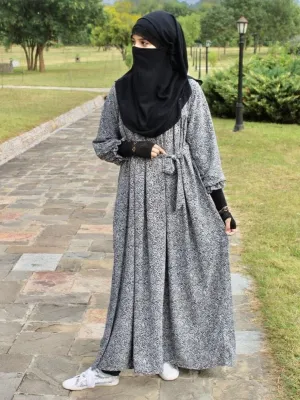

Exploring the Timeless Elegance of Abaya Style
The Rich History of Abaya Fashion
Abayas, the traditional garments worn by women in many Middle Eastern and Islamic cultures, have a history as rich and diverse as the regions they originate from. Dating back centuries, these flowing garments have evolved to become symbols of modesty, grace, and cultural identity. Originally, abayas served a practical purpose, providing protection from the harsh desert climate while adhering to religious beliefs regarding modest attire. However, over time, they have transformed into much more than just functional clothing items; they have become expressions of style and sophistication.
Modern Interpretations of Tradition
In recent years, the world has witnessed a renaissance in abaya fashion, with designers and brands around the globe embracing and reinterpreting this traditional garment. From the runways of Paris to the bustling streets of Dubai, abayas are being showcased in a myriad of styles, colors, and fabrics, blending traditional elements with contemporary trends. Designers are experimenting with new cuts, embellishments, and accessories, breathing new life into this age-old attire while staying true to its cultural significance.
The Influence of Cultural Heritage
One of the most striking aspects of abaya fashion is its ability to reflect the cultural heritage of the regions where it is worn. Each style, whether it be the flowing silhouettes of the Gulf countries or the more tailored designs of North Africa, tells a unique story rooted in tradition and history. The intricate embroidery, luxurious fabrics, and ornate detailing found in many abayas pay homage to centuries-old craftsmanship and artisanal techniques passed down through generations.
Empowerment Through Modesty
In a world often dominated by trends and fads, the modesty inherent in abaya fashion stands as a powerful symbol of empowerment for many women. By choosing to embrace modest attire, women are reclaiming control over their bodies and challenging societal norms that often equate beauty with revealing clothing. Abayas offer women the freedom to express themselves stylishly while remaining true to their beliefs and values, empowering them to navigate the complexities of modern life with confidence and grace.
Breaking Stereotypes and Embracing Diversity
Despite their cultural significance, abayas have often been misunderstood and misrepresented in Western media, perpetuating stereotypes and misconceptions about Islamic dress. However, as awareness and understanding grow, more people are recognizing the beauty and diversity of abaya fashion. Through fashion shows, exhibitions, and social media, designers and influencers are working to challenge stereotypes and promote a more inclusive narrative that celebrates the beauty of cultural diversity.
The Global Appeal of Abaya Fashion
What was once considered a niche market confined to specific regions has now transcended cultural boundaries to become a global phenomenon. With the rise of online shopping and social media, abaya fashion has reached audiences around the world, attracting admirers from diverse backgrounds who appreciate its elegance and sophistication. From modest fashion enthusiasts to trendsetters seeking unique statement pieces, abayas have found a place in the wardrobes of women everywhere, reaffirming their status as timeless classics.
Looking to the Future
As we look ahead, the future of abaya fashion appears brighter than ever. With designers pushing the boundaries of creativity and innovation, the possibilities for this versatile garment are endless. Whether it’s through sustainable practices, inclusive sizing, or collaborations with international brands, abaya fashion is poised to continue evolving while staying true to its roots. As society becomes more interconnected and culturally diverse, abayas will undoubtedly remain a symbol of grace, modesty, and timeless elegance for generations to come. Read more about abaya style


